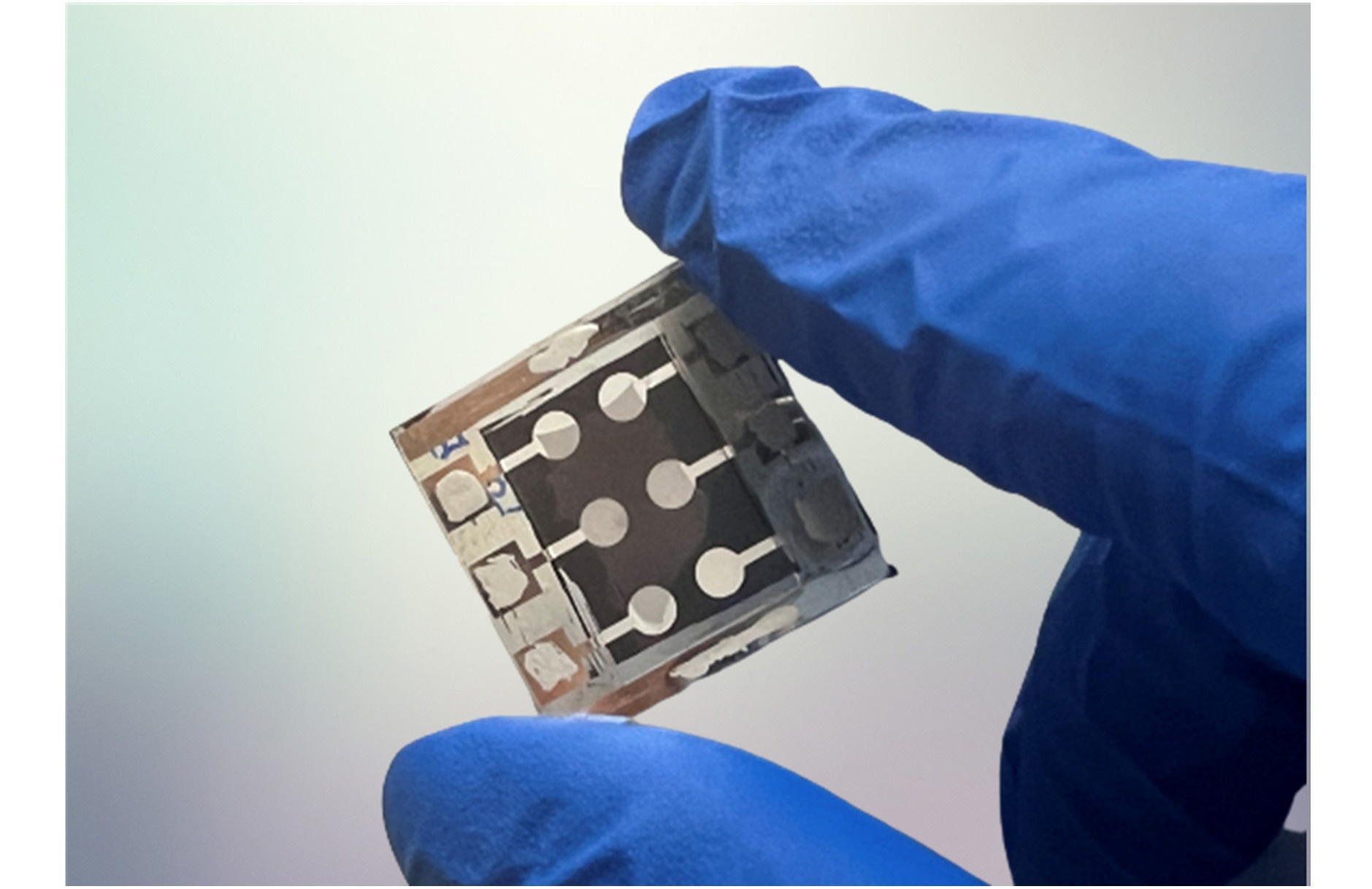Perovskite solar cells (PSCs) are a promising candidate for next-generation photovoltaic technology with high efficiency and low production cost, potentially revolutionizing the renewable energy sector. However, the existing layer-by-layer manufacturing technique creates problems that have hampered the commercialization of this technology.

Perovskite solar cells fabricated by the one-step solution spin-coating method. Image Credit: Dr Zhu Zonglong’s research group/City University of Hong Kong
Researchers from the City University of Hong Kong (CityU) and the National Renewable Energy Laboratory (NREL) in the United States have thus collaborated to create a new one-step solution-coating strategy that streamlines the manufacturing process and removes the barriers to commercialization for PSCs.
Reducing the number of device-processing steps without sacrificing device efficiency will help reduce the process complexity and manufacturing cost, which will enhance the manufacturability of PSCs.
Dr. Zonglong Zhu, Study Co-Leader and Assistant Professor, Department of Chemistry, City University of Hong Kong
He added, “We addressed the manufacturing issue with a novel approach to co-process the hole-selective contact and perovskite layer in a single step, resulting in state-of-the-art efficiency of 24.5% and exceptional stability for inverted perovskite solar cells. This helps bring the commercialization of the technology one step closer.”
PSCs are typically manufactured utilizing a layer-by-layer technique that includes sequentially depositing distinct solar cell layers on top of one another.
While this method has been effective in manufacturing high-performance perovskite solar cells, it has several drawbacks that may prevent its commercialization, including increased fabrication costs, inadequate homogeneity, and repeatability.
Dr. Joseph M. Luther from NREL and Dr. Zhu worked together to develop a new method for creating effective inverted perovskite solar cells that allow the hole-selective contact and perovskite light absorber to spontaneously form in a single solution-coating procedure.
They form a robust self-assembled monolayer as an excellent hole-selective contact while the perovskite crystallizes. This single solution-coating procedure not only solves wettability issues but also simplifies device fabrication by creating both the hole-selective contact and the perovskite light absorber simultaneously, instead of the traditional layer-by-layer process.
With a power conversion efficiency of 24.5%, the newly developed PSC device can maintain more than 90% of its initial efficiency even after 1,200 hours of continuous operation at its maximum power point. Its effectiveness is equivalent to that of similar PSCs with similar features.
The multidisciplinary team also demonstrated that the novel strategy works with different self-assembled monolayer molecular systems, perovskite compositions, solvents, and scalable processing processes, such as spin-coating and blade-coating procedures. Additionally, the PSCs created using the new method operate similarly to those created using earlier techniques.
Dr. Zhu added, “By introducing this innovative approach, we hope to contribute to the perovskite research community by proposing a more straightforward method for manufacturing high-performance perovskite solar cells and potentially accelerating the process of bring them to market.”
To find a set of self-assembled monolayer molecules best suited for this method and improve the PSCs’ overall performance, the research team intends to investigate the interaction between self-assembled monolayer molecule structures and perovskite precursors in more detail.
The study was published in the journal Nature Energy.
Dr. Zhu and Dr. Luther are the corresponding authors of the research.
The co-first authors are Dr. Zheng Xiaopeng and Dr. Chen Min from NREL, Mr. Li Zhen from CityU, and Dr. Zhang Yi from the Institute of Chemical Sciences and Engineering, École Polytechnique Fédérale de Lausanne (EPFL) in Switzerland.
The research work conducted at CityU was supported by the Innovation and Technology Fund and the Green Tech Fund in Hong Kong.
Journal Reference:
Zheng, X., et al. (2023) Co-deposition of hole-selective contact and absorber for improving the processability of perovskite solar cells. Nature Energy. doi:10.1038/s41560-023-01227-6.